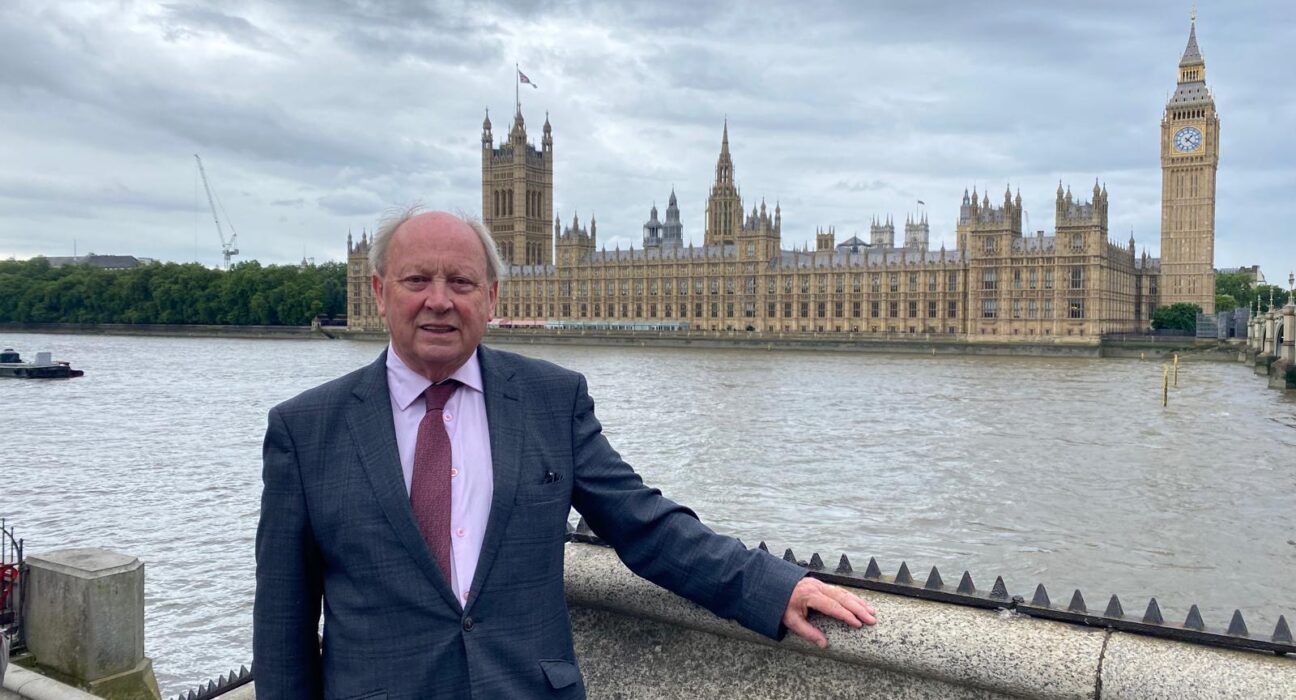The following article by TUV leader and North Antrim MP Jim Allister recently appeared in the News Letter.
Magical Thinking in Whitehall and Brussels
Newsletter readers may well recall my article of 14thJanuary in which I explained why I would force a vote on the Official Control Amendment Regulations later that day. A debate in the House of Lords on 29thJanuary has since shed further light on the innovative aspect of these regulations, which should be understood by all unionists as we approach 24 February when the Government will begin to apply new aspects of the Irish Sea Border on goods moving from Northern Ireland to Great Britain.
On the one hand, in accommodating the GB side of the Irish Sea border, these regulations are implicated in giving effect to all the border difficulties with which we are increasingly familiar, the disenfranchisement of 1.9 million UK citizens, not just in relation to one law, or 300 laws, but 300 areas of law, and all the attendant economic disruption and disinheritance that arises from the EU disrespecting the territorial integrity of the UK.
On the other hand, however, the regulations present a new difficulty for the Government. The justification for the construction of the Irish Sea Border was the need to avoid having Border Control Posts on the UK-ROI land border. Its champions claimed that this was required by the Belfast Agreement notwithstanding the fact that the text of the Agreement says no such thing, and notwithstanding the fact that insisting on their alternative Irish Sea border solution has made them the instigators of the biggest reversal of democracy in the history of the western world, violating three central provisions of the Belfast Agreement. The Regulations, however, make provision for the border to be moved to the Irish Sea, while dispensing with infrastructure on the border by means of allowing checks to take place away from Border Control Posts and making provision for inland Border Control Posts located away from the border, (see regulations 14, 7, 11, 16 and 17).
In doing so, they remove the justification for moving the customs and phytosanitary (SPS) border from the international border. Speaking in the Lords on 29 January, Baroness Hayman confirmed:
‘The instrument (the Regulations) also provides the power to allow for inland border control posts …’
She further stated, in an attempt to placate concerns about this move:
‘…this instrument only provides provision to be made for documentary, identity and physical controls to be undertaken at places other than border control posts or control points, and that we have robust, evidence-based risk modelling that can place SPS into categories based on the inherent risk that the product poses to animal, food, biosecurity and public health.’
The use of the word ‘only’ in this instance is interesting because the checks that take place at border control posts are documentary, identity and physical checks!
The political implications of, first, moving the border to the Irish Sea, supposedly on the basis that we could not have a hard border across the island of Ireland, only to then make provision for that border without infrastructure, were then spelt out very clearly by Baroness Hoey and Lord Morrow but the minister did not respond.
Had the Minister attempted to defend this arrangement she might have said that while the UK is content to have a border with no hard infrastructure for goods moving from the Republic and wider EU into the UK, the EU is not prepared to have such a border with respect to goods moving the from Northern Ireland into the Republic. Now that the new regulations are in place, though, demonstrating the option of a better way, this is an increasingly weak defence.
Going forward the Government has to explain why, knowing: i) that such a solution is workable, and ii) that the proportion of goods entering the Republic from Northern Ireland in 2020 was tiny (only worth 0.003% of EU GDP in 2020), they agree with a border ‘solution’ that is giving the EU the right to both make Northern Ireland an EU colony in 300 areas of laws and then imposing a hard border interrupting a far greater flow of goods from one part of the UK, GB, to another, NI. This is not only absurdly disproportionate but also deeply dishonourable, sacrificing key aspects of the citizenship of its own people and disrespecting the territorial integrity of the UK.
In this the EU also faces real difficulties. Given its stated commitment to democracy in both its accession criteria, requiring that candidate countries demonstrate the ‘stability of institutions guaranteeing democracy, the rule of law, human rights and respect for and protection of minorities’, and in its aid policy, why is the EU needlessly threatening the stability of our democratic institutions? Its intervention is both instigating the most pompous act of colonial disenfranchisement since democracy became a norm of western society and the removal of cross community consent, the most important political protection for minorities – in certain critical contexts.
Quite apart from demonstrating that far from representing ‘magical thinking’, running a border, while removing hard infrastructure from that border, constitutes government policy, the Official Controls Amendment Regulations remind us that the first such solution was advanced to give effect to Brexit by the EU itself. Mutual Enforcement was developed by Sir Jonathan Faull who served as EU Commission ‘Director General of the Task Force for Strategic Issues related to the UK Referendum’, together with Prof JH Weiler and Prof Daniel Sarmiento. Providing a means of delivering Brexit that protects the integrity of both the UK and the EU Single Markets without a hard border, Mutual Enforcement presents the solution proposed by my EU Withdrawal Bill currently before Parliament.
Instead of pressing ahead with the further needless division of our country into two with the arrival of the red lane parcels border on 31st March, the Government should adopt my Bill.

